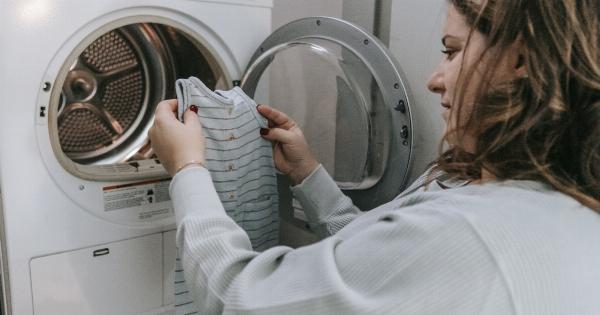Efficient and safe laundry practices are crucial for maintaining clean and hygienic clothes.
Whether you are doing laundry at home or managing a commercial laundry facility, adopting efficient and safe practices not only helps to preserve the quality of your garments but also promotes time and energy savings. This article will outline some essential laundry practices that ensure effective cleaning while minimizing the risk of damage or accidents.
Selecting the Right Laundry Products
The first step towards efficient and safe laundry practices is to choose the right laundry products. It is important to read the labels and understand the instructions before using any detergent or fabric softener.
Make sure to use products that are appropriate for the specific fabrics and garments you are washing, as different textiles may require special care. Additionally, consider opting for eco-friendly and hypoallergenic options to minimize environmental impact and reduce the risk of skin irritations or allergies.
Sorting the Laundry
Sorting your laundry is crucial to prevent color bleeding and damage to delicate fabrics. Sort your clothes according to color, fabric type, and level of dirtiness.
Washing whites separately from colored garments can help prevent color transfer and preserve the brightness of white clothes. Similarly, separating delicates from heavy fabrics reduces the risk of damage caused by friction or tearing. Sorting laundry helps ensure better cleaning results and prolongs the life of your garments.
Pre-Treating Stains
Effective stain removal is easier when stains are treated promptly. Before washing your clothes, inspect them for any visible stains and pre-treat them with suitable stain removers or home remedies.
Common pre-treatment methods include applying liquid detergent, using stain sticks, or soaking the stained area in a mixture of water and baking soda. Remember to follow the instructions provided by the product manufacturer or consult reliable stain removal guides for best results. Pre-treating stains helps to remove them effectively during the washing cycle.
Using the Right Water Temperature
The water temperature you use for laundry can greatly impact the cleaning process and the longevity of your clothes. It is generally recommended to follow the care labels on your garments to determine the appropriate water temperature.
Hot water is effective for removing grease and heavy stains, while warm water is suitable for most everyday laundry. However, using hot water excessively can cause certain fabrics to shrink or fade. For delicate items and clothes prone to color bleeding, opt for cold water to minimize the risk of damage.
Using the right water temperature ensures efficient cleaning results without compromising the fabric’s integrity.
Proper Laundry Machine Usage
Operating your laundry machine correctly is crucial for efficient and safe laundry practices. Be sure to avoid overloading the machine, as this can affect the washing quality and put excessive strain on the machine’s components.
However, underloading the machine may result in excessive water usage, detergent wastage, or suboptimal cleaning results. Additionally, make sure to use the appropriate wash cycle for the type of clothes being laundered. Delicate fabrics may require a gentle or hand wash cycle, while heavily soiled items may require a longer or more intensive cycle.
Choosing the right settings for your laundry load helps optimize the cleaning process while maintaining the machine’s longevity.
Optimizing Drying Methods
The choice of drying method can significantly affect the quality and durability of your clothes. Air-drying is generally considered the most gentle and energy-efficient option, particularly for delicate garments.
Hanging clothes to dry helps prevent shrinking and reduces the risk of damage caused by high heat or tumbling. However, if you choose to use a dryer, be sure to select the appropriate heat settings and avoid overdrying. Overdrying can lead to fabric shrinkage, increased wrinkling, or even potential fire hazards.
When using a dryer, clean the lint trap regularly to maintain its efficiency and reduce the risk of fire. Proper drying methods contribute to well-maintained and longer-lasting garments.
Preventing Laundry Room Accidents
Efficient and safe laundry practices also involve creating a safe environment to prevent accidents. Keep your laundry room well-ventilated to reduce humidity and promote air circulation. This helps prevent mold growth or unpleasant odors.
Ensure that the laundry area is well-lit to avoid accidents and make it easier to spot any potential hazards. Keep laundry products such as detergents, fabric softeners, and bleach out of reach of children and pets. It is also crucial to follow proper handling and storage guidelines to avoid spills, leaks, or accidental ingestion.
Maintaining a safe laundry room minimizes the risk of accidents and ensures the well-being of everyone in your household or facility.
Regular Cleaning and Maintenance
To optimize laundry performance and extend the lifespan of your appliances, regular cleaning and maintenance are essential. Clean your washing machine periodically to remove any residue, mold, or dirt that may accumulate over time.
Check and clean the dryer vent to prevent lint buildup, which can pose a fire hazard. It is also advisable to clean the detergent dispensers regularly to ensure proper functioning and prevent clogs.
Following the manufacturer’s instructions for maintenance tasks and scheduling routine checks helps keep your laundry appliances in optimal condition, ensuring efficient and safe laundry practices in the long run.
Energy and Water Conservation
Efficient laundry practices also involve minimizing water and energy consumption. Whenever possible, wash full loads of laundry rather than smaller ones to maximize resource efficiency.
Adjust water levels based on the load size to avoid unnecessary wastage. Use the appropriate amount of detergent, as using excessive amounts not only wastes the product but also requires more rinsing, leading to higher water usage.
Additionally, consider using energy-saving settings on your washing machine and dryer, such as shorter wash cycles or low-heat drying options. Adopting energy and water conservation practices contributes to a more sustainable laundry routine.
Teaching Children About Laundry Safety
Teaching children about laundry safety from an early age promotes their independence and helps prevent accidents. Emphasize the importance of not touching the washing machine or dryer without adult supervision.
Teach them how to handle detergent safely and the potential risks of consuming or playing with laundry products. As they grow older, demonstrate how to properly sort clothes, use the washing machine, and select suitable settings. Educating children about laundry safety allows them to become responsible and proactive participants in household chores.
Conclusion
Efficient and safe laundry practices are essential for maintaining clean, hygienic, and long-lasting garments.
By selecting the right laundry products, sorting clothes appropriately, pre-treating stains, using the correct water temperature, operating the laundry machine correctly, optimizing drying methods, preventing laundry room accidents, regular cleaning and maintenance, conserving energy and water, and educating children about laundry safety, you can ensure an efficient, effective, and safe laundry routine. Implementing these practices not only saves time and resources but also promotes the longevity of your clothes, contributing to a sustainable and well-managed laundry routine.






























